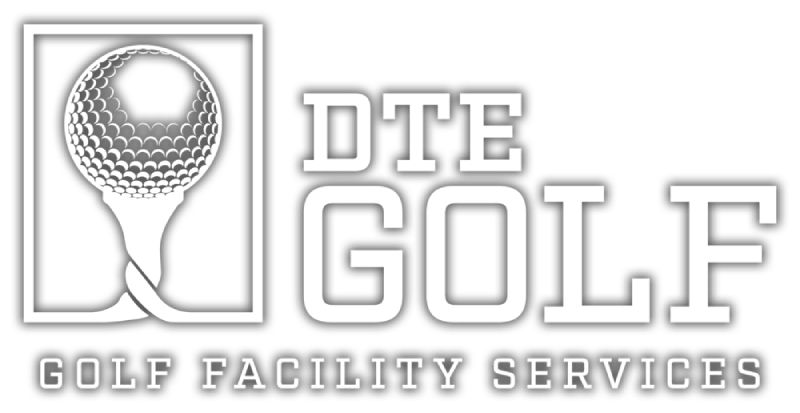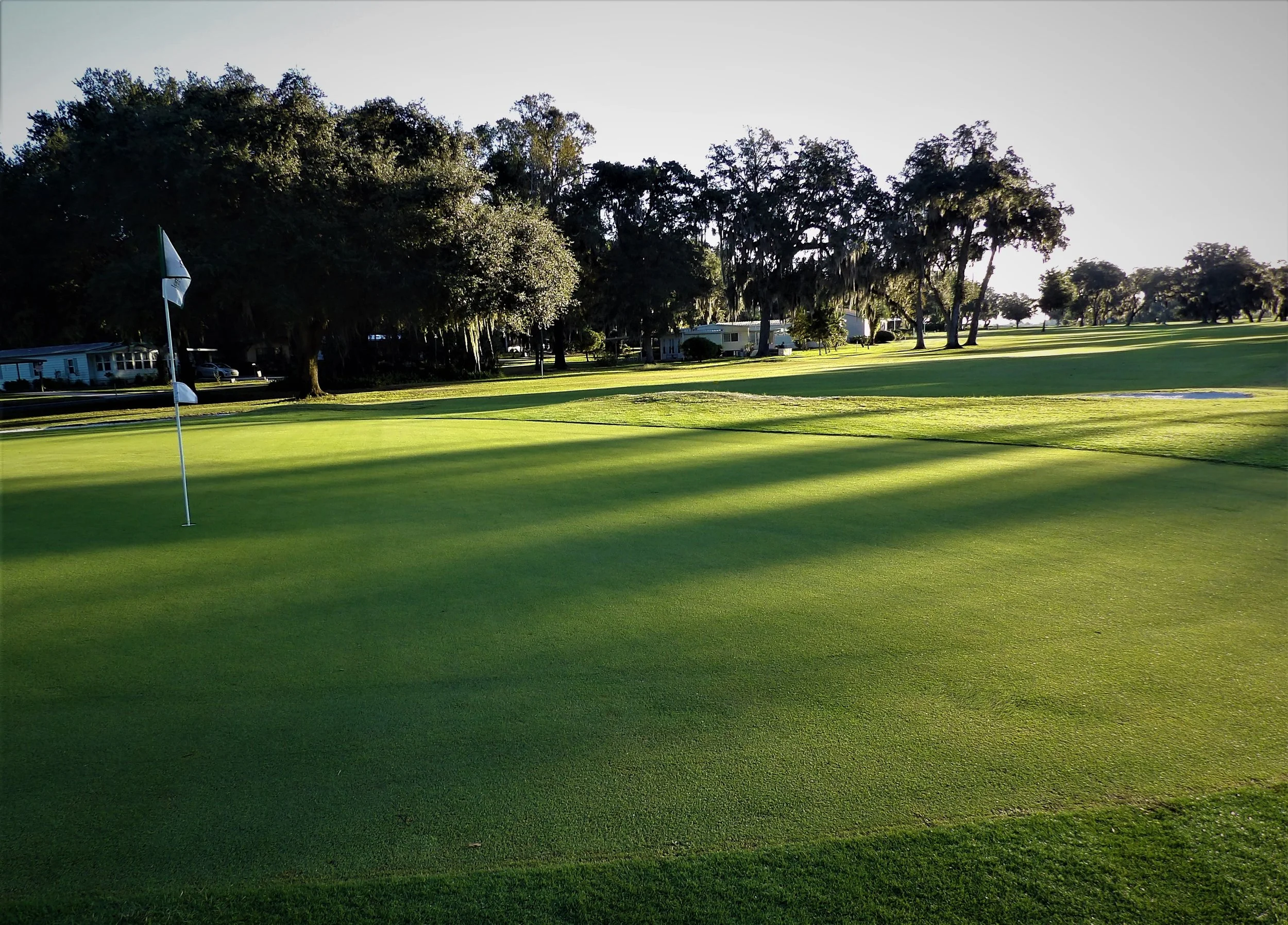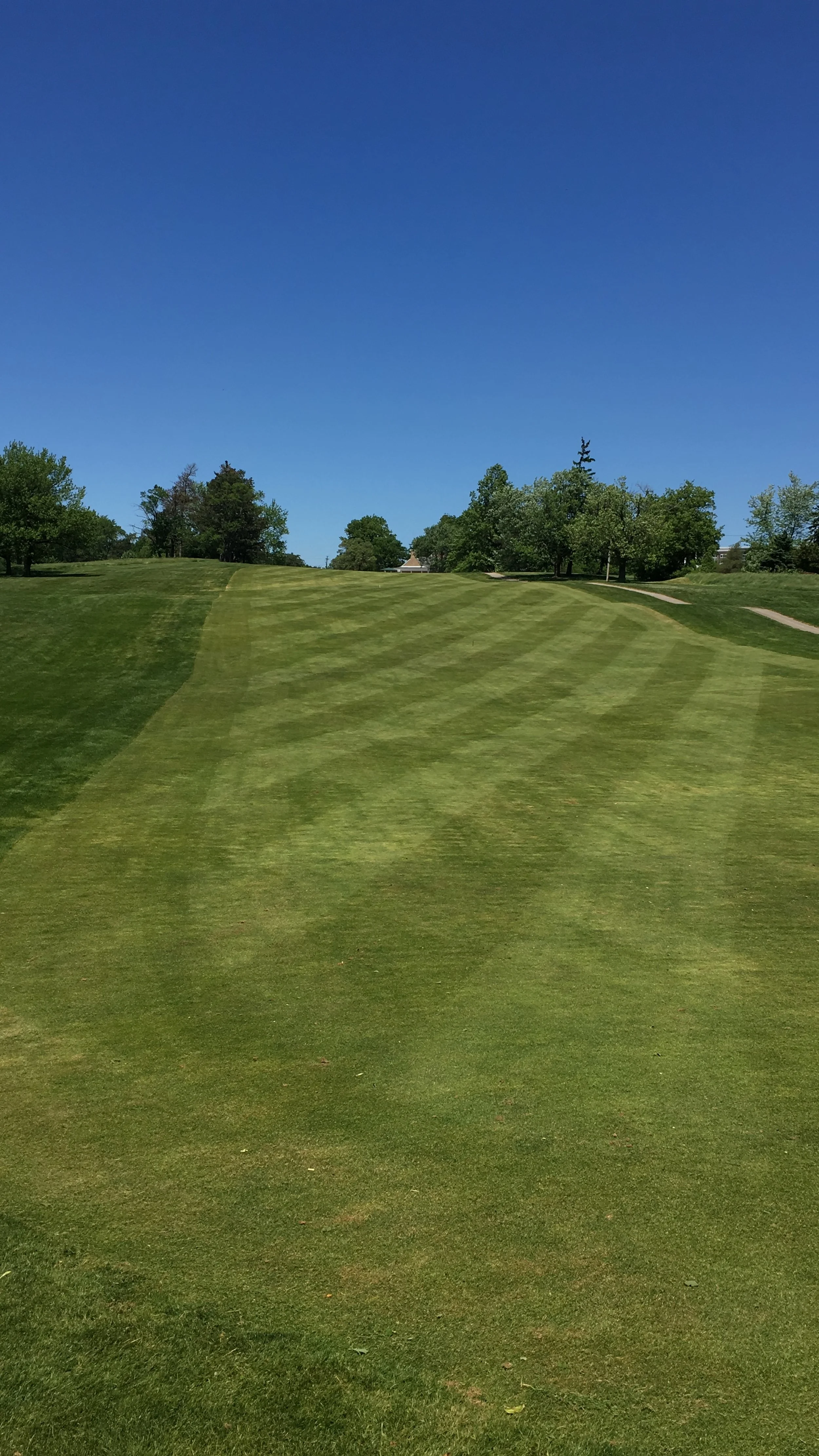Mowing Heights and Frequency on Golf Courses
Turfgrass playability and growth can be influenced by certain cultural practices like verticutting, mowing, and rolling, while others, like aerification, are required to boost turf health. This article discusses the necessity of each practice and lists methods for growing turf for better playability while reducing water loss and promoting environmental protection.
Mowing:
Mowing is the most critical yet essential cultural practice a manager can use to get desirable turf. Mowing has an impact on other cultural practices and numerous aspects of turf quality, like texture, density, root development, color, and wear tolerance. Failure to mow appropriately often leads to weakened turf with poor quality and density.
Turfgrasses cultivated on golf courses can be mowed near the ground, as their terminal growing points (crowns) are placed at or just beneath the soil surface. Regrowth from elongation and cell division occurs from growing points situated below the mower blade’s height. Conversely, upright-sprouting dicot plants have their meristematic (growth points) tissue at the tip or top of their stems. Consequently, mowing eliminates this growing point, and numerous upright dicot weeds are thus effortlessly eliminated from regularly mowed turf.
Mowing impacts turfgrass growth habits. Frequent mowing helps increase shoot density and tillering. Mowing reduces rhizome and root growth since, after mowing, food reserves are utilized for new shoot tissue growth at the expense of rhizome and root growth. Inappropriate mowing aggravates this issue.
The turf does not experience a stress period from the sudden loss of top growth and can recover more rapidly if the right mowing frequency and height are implemented. Irregular mowing leads to alternating cycles of raised crowns accompanied by scalping, depleting more food reserves. Keep in mind that stressed turf indicates a weaker plant that is susceptible to insects, drought, and disease — to an extent requires more pesticides.
Mowing Height:
Mowing height describes the height of top growth instantly after the grass is cut. Determining this height precisely can be confusing to new mower operators. Usually, height is checked and adjusted on a level surface like a worker’s roadway or bench and is thus called the “bench setting.”
But, when operated, the mower wheels press on grass shoots; as a result, the unit rides on top of them, and the mower is indeed raised more than the bench setting. In contrast, when you use a mower on soft ground or on a thick, spongy thatch layer, the mower cuts less than the bench setting, generally leading to unwanted scalping.
Variables Influencing Mowing Height
Numerous factors impact the golf course grass height. Mowing heights for golf course turf are led by the grass type and its use. For instance, golf greens are mowed less than 0.25 inches to offer the fast, smooth, and consistent playing surface that golfers like. Other aspects impacting mowing height include shade, time of year, mowing frequency, mowing equipment, root growth, and stress.
Table 1 lists the suggested mowing heights for many areas of a golf course, and Table 2 shows the suggested mowing heights for common areas and lawn grasses. Leaf tissue and shoot is the place of photosynthesis. Any elimination of this tissue significantly impacts the developmental and physiological condition of a turfgrass plant. If the grass is mowed too irregularly or too low, crown damage can take place, and extra photosynthetic tissue is removed. This leads to off-colored turf with a less recuperative ability.
Table 1: Recommended golf course mowing heights, by area
Table 2: Recommended mowing heights for lawn and common area turfgrasses
1. Root-to-Shoot Ratio
If plants are mowed too low, their roots need a considerable amount of time to give the food needed to generate shoot tissue for later photosynthesis. Turfgrasses consist of a ratio of root-to-shoot tissue that is optimal for supporting developing grass. If you mow the turf too low all at once, the ratio is imbalanced, with more roots present than the plant physiologically needs. This extra root mass is then removed.
2. Root Growth
A direct relationship exists between root depth and mowing height. As you reduce the mowing height, a relative reduction in root depth takes place. Low root depth is required to support low top growth when the mowing height is reduced. This is why golf greens require to be fertilized and watered more often than other playing surfaces.
3. Shade
Grass leaves grow more upright to take filtered sunlight for photosynthesis as much as possible. As an outcome, the mowing height for grasses cultivated under these conditions requires to be increased by at least 30%. If mowed consistently short, grasses cultivated under shaded conditions slowly thin because of the lack of sunlight required for photosynthesis.
4. Mower Type
Mowing height is also affected by the mower type being utilized. Flail-type and rotary mowers cut best at heights above 1 inch and are used mainly in rough and out-of-play areas. On the other hand, reel mowers cut best at heights below 1 inch and are used on the majority of golf courses.
5. Season
The season of the year may also have an impact on the mowing height. Turfgrasses have an increased growth habit in early spring. They can be mowed closer without substantial consequences compared to other seasons. Mowing closely in early spring increases turf density, controls thatch, removes dead leaf tissue or excess residues, and encourages earlier green-up.
6. Environmental Stresses
Mowing heights should be raised during more stressful times, specifically during extended periods of cloudy weather. As high as the golfing clients will allow, you can raise cutting heights.
Mowing Frequency
The grass’s growth rate should decide the frequency of cuts. The growth rate is affected mainly by mowing height, the source and amount of nitrogen fertilizer applied, and the temperature or season.
One-Third Rule
The general rule is to mow frequently enough so that, at most, one-third of the top growth is eliminated at one time. Eliminating more than this amount lessens the recuperative potential of grass due to the substantial loss of leaf area required for photosynthesis.
Scalping
The turf should not be mowed down to the desired height all at one time if it becomes too tall. Such serious scalping may cease root growth for considerable periods. Also, scalping decreases turf density, raising weed establishment. Tall grass should be mowed often and the height slowly reduced with every mowing until the intended height is reached.
Mowing is essential in maintaining a pristine golf course. To save money and time, outsource a premium golf partnership with DTE Golf® today to manage, maintain, and maximize your golf courses.





